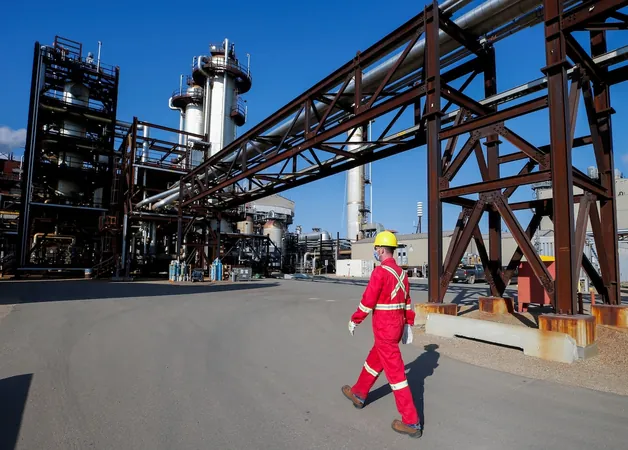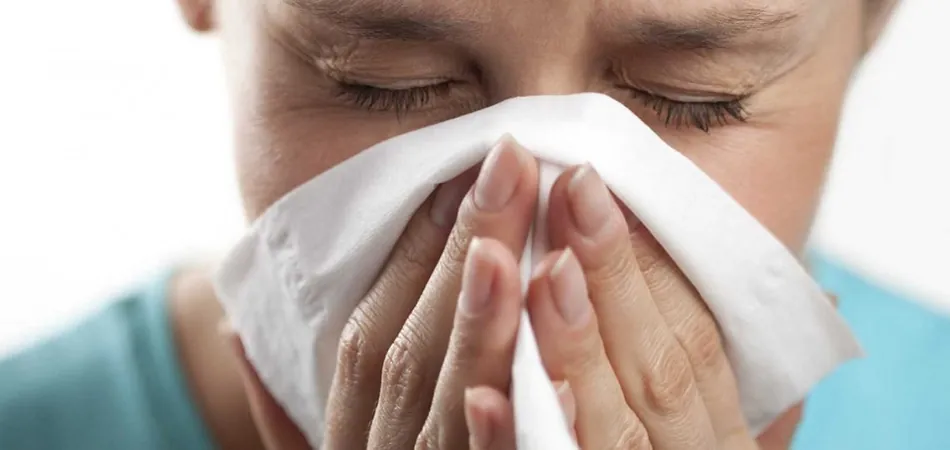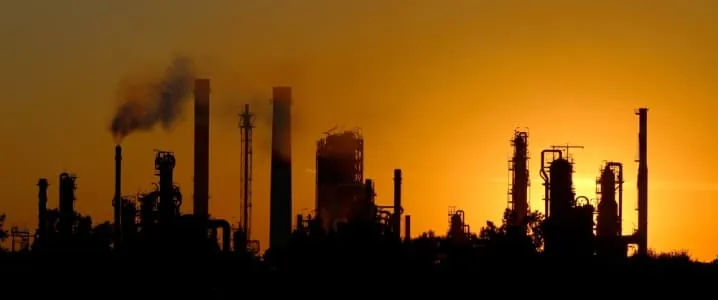
Soot and Suffering: The Alarming Air Quality Crisis in Sault Ste. Marie
2024-10-14
Author: Emma
The Unseen Threat: PM 2.5 Pollution and Its Dangers
Living in Sault Ste. Marie is becoming increasingly perilous due to the growing levels of PM 2.5, a harmful particulate matter that poses serious health risks. The city is grappling with one of the highest incidence rates of cancer in Ontario, particularly concerning is the alarming prevalence of lung and prostate cancers.
Statistics reveal that residents of Algoma, the district encompassing Sault Ste. Marie, are not only at risk of cancer, but they also face significant health challenges. The area has recorded the highest rate of opioid overdose deaths in the province at 69.6 per 100,000 individuals. Life expectancy for babies born here has also taken a hit — males are expected to live to 77.2 years, while females to 81.6 years, which is three years lower than the provincial average.
What is PM 2.5 and Why Does It Matter?
PM 2.5 represents fine inhalable particles with a diameter of 2.5 micrometers or smaller, making them incredibly dangerous as they can penetrate deep into the lungs and even enter the bloodstream. This particulate matter is often laden with toxic substances, including black carbon and organic chemicals, leading to severe health implications.
In Sault Ste. Marie, the air quality is further compromised by industrial pollution. Algoma Steel, a major employer in the region, has faced scrutiny for failing to control emissions from their facilities, particularly from the aging No. 7 coke oven battery, notorious for emitting large quantities of PM 2.5. In 2015, despite being issued Site-Specific Standards (SSS) to reduce emissions, Algoma Steel has continued to exceed these limits significantly.
The Health Crisis Unfolding
Recent data from the U.S. reveals that PM 2.5 pollution contributed to nearly 4.94 million deaths worldwide in just one year, a staggering statistic that highlights the urgency of addressing air quality issues. Short-term exposure to PM 2.5 can trigger various respiratory and cardiovascular problems, while long-term exposure correlates with chronic diseases such as lung cancer, which has been documented to increase by up to 34% in those living near heavy sources of pollution.
In Ontario, specific areas, including postal code P6C adjacent to Algoma Steel, have shown horrifyingly high rates of acute myeloid leukemia, another consequence of ongoing exposure to PM 2.5. Studies have even drawn connections between long-term particulate matter exposure and neurodegenerative diseases like Alzheimer’s and Parkinson's.
The Broader Impact of Canada's Wildfire Crisis
To compound the air quality situation, Canada has experienced one of the worst wildfire seasons on record, releasing mass amounts of PM 2.5 into the atmosphere. In 2023 alone, wildfires scorched over 57,900 square miles, leading to a fierce increase in air pollution not just locally but across the continent. Smoke from these wildfires has extended air quality alerts beyond Canadian borders, impacting millions in the U.S.
It’s estimated that PM 2.5 from wildfires can be up to ten times more toxic than regular emissions, highlighting the urgent need for improved air quality regulations and public health initiatives.
Protecting Yourself
With no safe level of PM 2.5 exposure, it’s crucial for residents to consider protective measures such as wearing N95 respirators. These masks can significantly reduce exposure to harmful air pollutants and may lead to a decrease in hospital admissions due to respiratory issues.
The integration of mask-wearing into daily life aligns with practices seen in parts of East Asia, where cultural norms have long accepted masks as a tool for health protection.
Conclusion: A Call to Action
The alarming data surrounding PM 2.5 levels in Sault Ste. Marie must serve as a wake-up call to both residents and policymakers. There is an urgent need to hold industrial polluters accountable and to foster public awareness about the dangers posed by air pollution. The future health of Sault Ste. Marie's residents depends on immediate and decisive action to improve air quality and combat this hidden killer.
Stay informed and take action to protect your health and the health of your community. The time is now to prioritize clean air for everyone in Sault Ste. Marie.









 Brasil (PT)
Brasil (PT)
 Canada (EN)
Canada (EN)
 Chile (ES)
Chile (ES)
 España (ES)
España (ES)
 France (FR)
France (FR)
 Hong Kong (EN)
Hong Kong (EN)
 Italia (IT)
Italia (IT)
 日本 (JA)
日本 (JA)
 Magyarország (HU)
Magyarország (HU)
 Norge (NO)
Norge (NO)
 Polska (PL)
Polska (PL)
 Schweiz (DE)
Schweiz (DE)
 Singapore (EN)
Singapore (EN)
 Sverige (SV)
Sverige (SV)
 Suomi (FI)
Suomi (FI)
 Türkiye (TR)
Türkiye (TR)